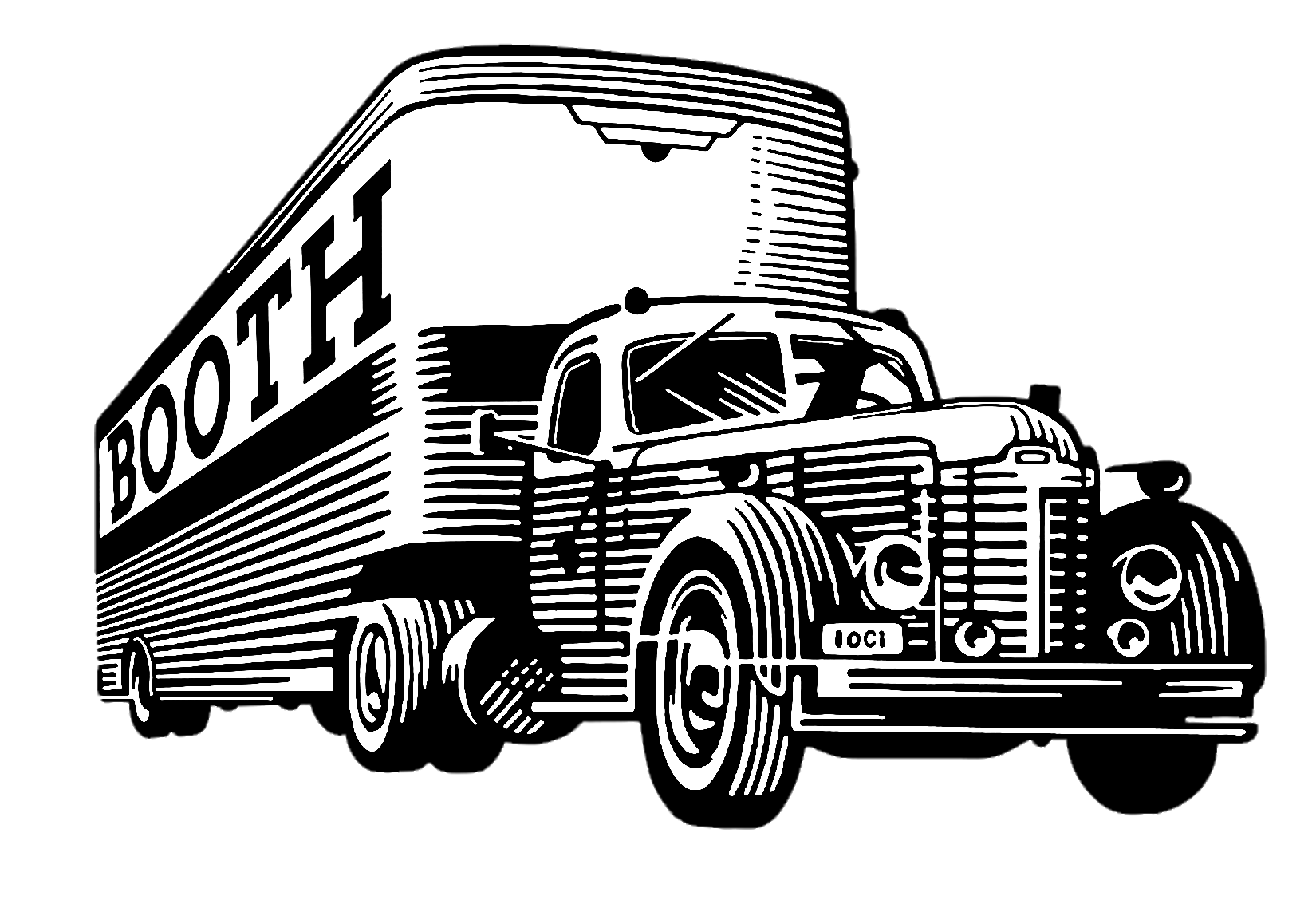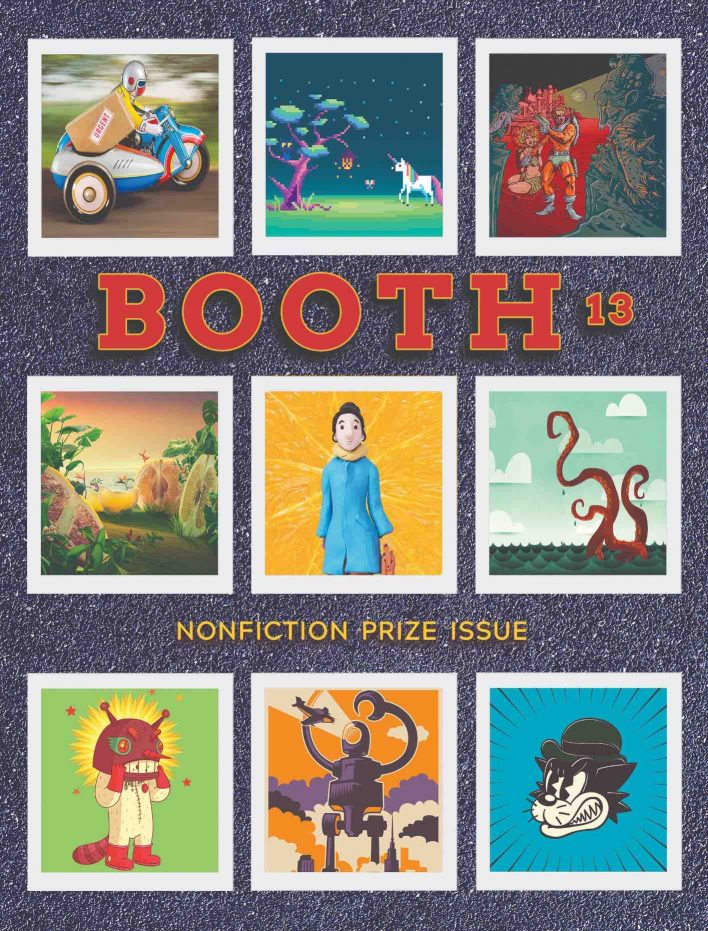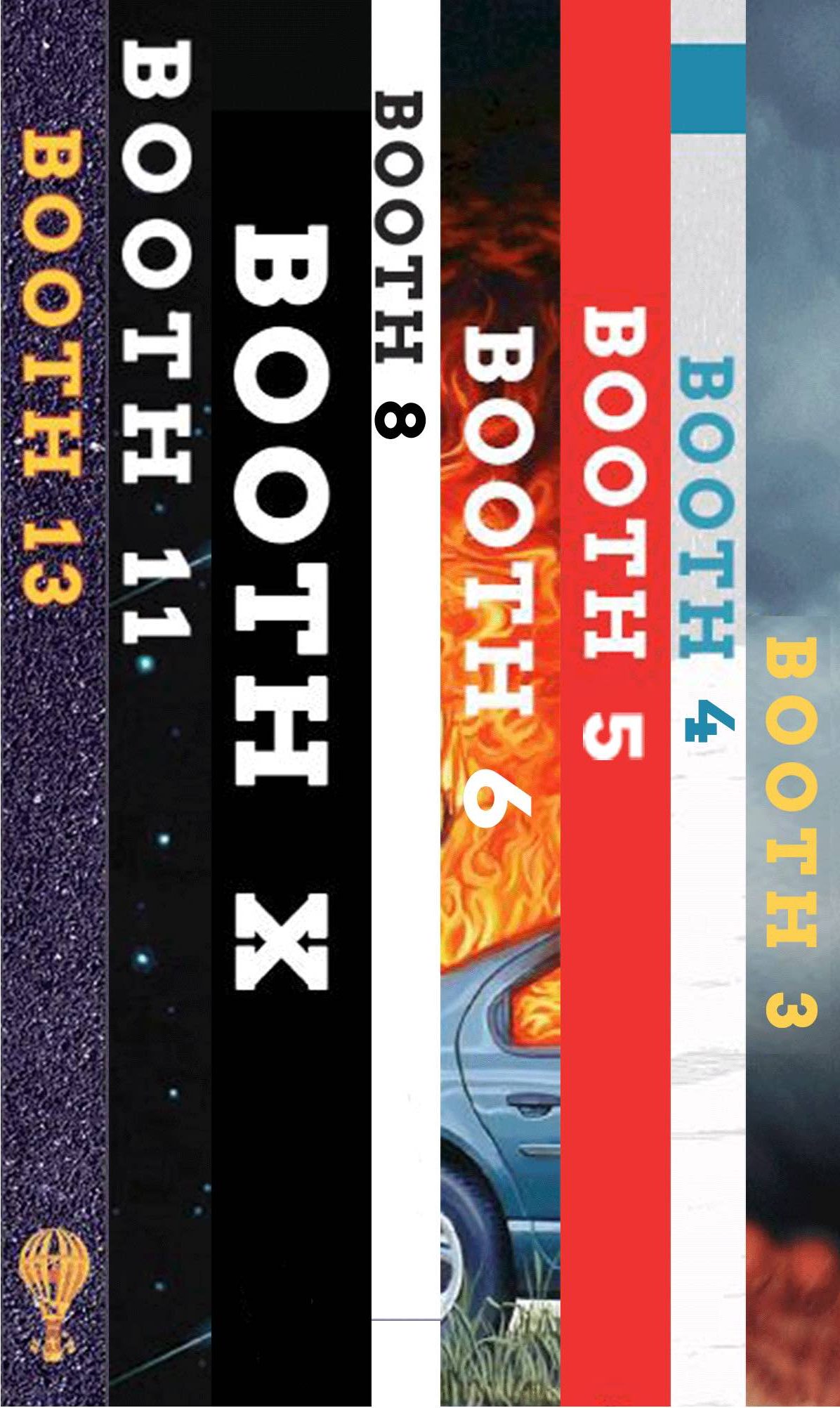Shocking New Report Reveals True Meaning of the Second Amendment
Fifteen years after a blockbuster Supreme Court decision, Professor Val Gorsome claims to have discovered the truth about the right to bear arms
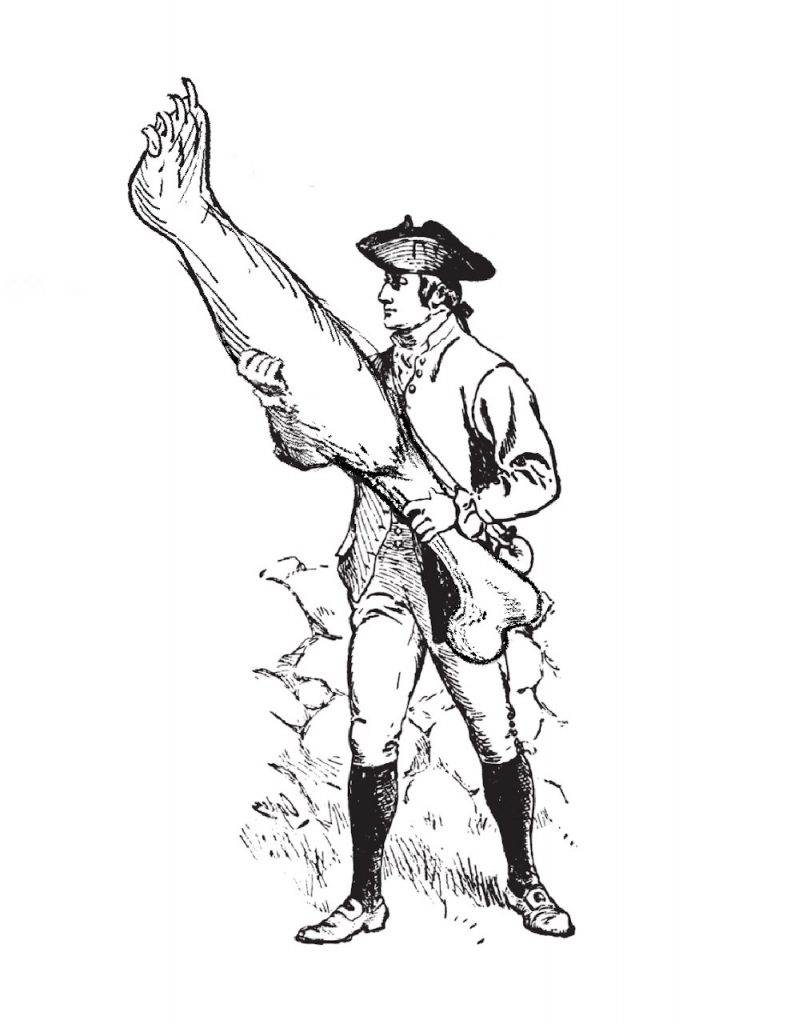

By Julie Jones
November 30, 2024 at 6:00 a.m. EDT
CHARLOTTESVILLE – An academic researcher claims to have discovered important evidence about the historical context of weapons and the Second Amendment in early American society, information that is sure to have a broad impact upon our gun laws and culture.
Professor Val Gorsome of the University of Virginia School of Law, with joint appointment to the university’s Corcoran Department of History, began their research after the Supreme Court issued its blockbuster 2008 decision, District of Columbia v. Heller. In that case, the Court, by a slim 5-4 majority, ruled that judges should look to the meaning of the words in the Second Amendment as defined at the time the amendment was ratified in 1791 to determine if a modern gun law is constitutional.
“Justice Scalia spilled a great deal of ink in Heller,” said Gorsome, “trying to deduce what it meant to ‘bear arms’ at the time of our nation’s founding. His mistake has been compounded in more recent decisions, particularly McDonald and Bruen, though a few justices recently tried to take the sting out of it in Rahimi. In any case, there was a fundamental flaw in his reasoning. He construed ‘bear’ as a verb, never as a noun.”
Gorsome’s article, “The Right to Keep Bear Arms and Early American Weaponry,” was published yesterday in the Journal of American History.
Related Story: Dance Video Featuring World’s First 3D-Printed Bear Arm Goes Viral
Gorsome has spent the last fifteen years interviewing families of colonial heritage, those whose roots date back to the original thirteen territories. They scoured the print files and records in small town libraries and historical societies. They searched for any correspondence, drawings, diaries, or other ephemera that would shed a brighter light upon our country’s history with guns.
“I certainly didn’t go looking for this controversy,” said Gorsome. “But I found so much evidence. I felt a duty to publish even though I knew the death threats would start as soon as the article was posted on social media.”
Related story: University Professor Recovering from Gunshot – Alleged Shooter Under Arrest
According to Gorsome’s article, a taxidermy procedure developed around 1550 is responsible for our nation’s current obsession with guns. After a bear was killed, the two front arms were detached from the shoulder sockets and preserved, using a shaft of wood or metal as a brace to keep the arm stiff through the wrist and elbow joints. The fur was then stuffed and sewn tight in a cuff around an exposed section of the humerus, six to seven inches below the shoulder ball. That stretch of exposed bone would serve as the hilt for gripping the arm like an oversized sword. The claws at the tip were typically left in their natural condition, though some were sharpened or serrated, and a few were laced with poison or animal scat.
“The weapon of choice for everyone except the elite,” said Gorsome. “It’s a wonder the bears didn’t go extinct.”
Related Story: Animal Rights Activists Call for National Ban on Bear Hunting
The new theory is controversial. Harvard University School of Law Professor Binty Crouch asserts that there is no record in old laws or court cases of bear arm ownership.
“First of all, bears have legs, not arms. Second, people have been researching early American weaponry for decades, and there has never been even a hint of a bear arm being used by anyone, ever. Maybe this alleged ‘smoking-gun’ evidence Val ‘discovered’ is just a hoax.”
According to Francesca DelaRosa, American history archivist at Brown University Library, most primary historical source documents are inaccessible to the average, or even above-average, researcher because they are not online. They may not even be catalogued or organized. They may be moldering in boxes in basements.
“The most accessible, and therefore most used, historical sources tend to be a relatively small cache of digitized documents that concern white men in high community standing, which, for most research, results in incomplete and flawed conclusions, errors that become compounded in further research citing to these articles,” DelaRosa said.
Related story: AI Learning from its Own Hallucinations, Doubling-Down on its Errors and Rewriting History
The most common gun in the eighteenth century was a muzzle-loading single-shot. The metal rusted easily. The device was cumbersome to load and reload. It was heavy, unwieldy to use, and nearly impossible to aim. Injuries to gun owners handling their weapons were nearly as common as injuries to their intended targets.
“Bear arms had a tremendous advantage at the time,” said Gorsome. “They were ready to use at a moment’s notice. They required no upkeep. Munitions did not need to be purchased. Accidental injuries were rare. Granted, they only worked at close distance, but given how long it took someone to load and fire a musket, there was plenty of time for the bear-armed person just to run up to them and give them a good slash. Best of all, anyone who managed to trap and kill a bear could own not just one but two.”
Related story: 14-Year-Old Boy Builds Ghost Gun Using Library’s Free MakerSpace – Evades Background Check and Age Restriction Laws
Crouch is not convinced. “What about the word ‘firearm’? How do they explain that?”
Gorsome contends in their article that the original use of the term was coined after an August 1598 dispute over livestock in Jamestown, Virginia. Frederick Ullman lit his bear arm on fire before attacking his neighbor, William Johanson, whom he believed had stolen two of his cows.
“Though English law banned the publication of newspapers in the early colonies, we found two independent accounts of the incident,” said Gorsome. “The first was from Ullman’s wife’s diary, and the other was from a record of a dispute-resolution session shortly after the incident. Use of the term grew within Jamestown and eventually spread not just among the colonies but across the Atlantic, only later becoming associated with guns. The flaming bear arm – ‘ye fierey arme’ – came first.”
According to DelaRosa, the Oxford English Dictionary’s first listed use of the term comes from 1643 in England, post-dating the Jamestown incident by nearly 50 years.
Professor Crouch has an alternate explanation. “Written language always follows oral usage. The word must have been in common parlance in early seventeenth-century England. It is unlikely in the extreme that the term could have migrated from this alleged cow dispute, from this single isolated colony, all the way back to Europe to spread like wildfire, as it were. Plus, what are the chances that any colony farmer’s wife kept a diary?”
Literacy rates were quite high among the colonists, according to DelaRosa, nearing 90% by some estimates for both men and women. “The reason was simple,” she said. “The ability to read was necessary for Bible study.”
Related Story: Peter Packed a Pistol – Study Claims Proof of Proto-Guns in New Testament
Most of the guns in pre-revolutionary colonial America were shipped from England. Some were given to Native American tribes in diplomatic gestures, but the English Crown was less eager to arm her subjects, who were becoming increasingly unruly. It was illegal to produce guns in the colonies. Only in 1816, twenty-five years after the Second Amendment was adopted, did Eliphalet Remington build the first gun manufacturing plant in the United States. Samuel Colt followed forty years later in 1855 with his factory. But before 1791, colonists equated guns with royal domination. The English laws that governed the colonies were enforced by English soldiers who carried guns that were made in England.
“We found these really interesting articles in the mid-1700s, after colonial newspapers were legal, of strange injuries to tax collectors,” said Gorsome. “Three to five parallel gouges across the face, arm, or chest. Though the articles typically suggested that these injured soldiers happened to trip on a rake, we believe the stories were coded communications to fellow colonialists of successful micro-rebellions, meant to encourage more. But the king and his agents would have had no clue that it was actually an attack upon the sovereign.”
Crouch has a different theory. “Those who were ideologically opposed to foreign rule purchased guns because guns were what England recognized as power. Guns were, and are, the language of resistance and war. And our colonies were actually unique compared to other colonies around the world, where England did her almighty best to keep guns out of the hands of the so-called natives. In our case, she gave guns to the Native Americans as bargaining chips and to curry favor. That’s a whole other issue. But she did not prevent colonists from buying guns. Quite the opposite. More colonists owned guns on average than English citizens at the time.”
England, according to DelaRosa, simply wanted a monopoly on the market. The Crown tried to prevent colonists from purchasing guns from French and German manufacturers and outlawed the building of gun factories in the North American colonies so that every colonist would have to purchase an English-made gun. “Money was always the driving force.”
Related Story: Gun Manufacturers Report Sudden Surge in Sales Amidst Rumors that Feds to Ban All Guns – NRA Up in Arms
Gorsome does not deny that some colonists owned guns but asserts that bear arms were more important in everyday life and more important to the developing national psyche. Gorsome found the emblem of two crossed bear arms drawn innumerable times in the margins of letters of both citizens and statesmen between 1667 and 1803. Most notably, the symbol was sketched in James Madison’s notes for his speech to Congress on June 8, 1789, when he introduced to Congress the first ten constitutional amendments that would become the Bill of Rights.
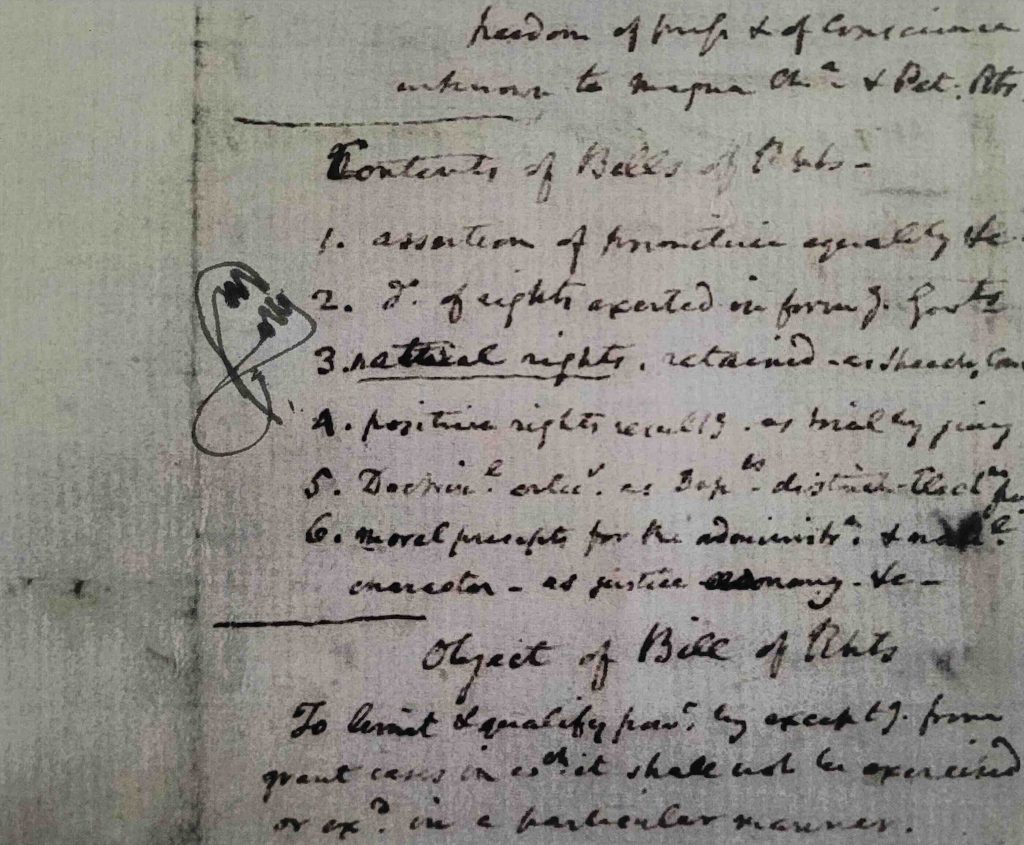
According to Gorsome, the symbol was crucial in the drafting of the Second Amendment. Madison’s first draft was based on Article XIII of the Pennsylvania Declaration of Rights of 1776, which stated that “the people have a right to bear arms for the defense of themselves and the state.” The Second Amendment now states that “the right of the people to keep and bear Arms, shall not be infringed.”
But Gorsome asserts that the “and” is a scrivener’s error that has warped the true meaning. The original Second Amendment language mirrored the Pennsylvania phrasing, with the then-ubiquitous bear arm symbol inserted between the words “keep” and “bear Arms.” However, over the next fifty years, the symbol gradually fell out of use and became stylized beyond recognition. In 1844, in Thomas Gordon’s edition of the federal laws and constitution, the icon was incorrectly reproduced as an ampersand. Subsequent editions followed suit. Then, in John Mallory’s 1901 edition, the ampersand was replaced with an “and.”
Related Story: ‘&’ Memes Overwhelm Social Media, Crashing Servers – Russian Conspiracy Suspected
“No modern researcher ever noticed this because they didn’t have the context to know what the original symbol meant,” said Gorsome. “But in 1791, it was a democratic symbol of a democratic weapon equally available to all. A symbol of America’s raw, brute strength. A symbol of their independence from the Crown. A symbol of their independence from her guns, her tea, her taxes. The men who ratified the Second Amendment understood what the words meant to the citizens of their time. They would have intended them to speak directly to the bear arm owner.”
Crouch remains unconvinced. “Our Revolutionary War was fought, and won, with guns.”
“The word ‘gun’ does not exist anywhere in the Constitution,” says Gorsome. “If the Supreme Court is truly interested in the original meaning of the Second Amendment when it was written, if they continue to insist that we can know anything for certain about the past when we can’t even comprehend, let alone agree upon, our present reality, then the next chance they have, they must rule that people have a right to keep bear arms. End of story.”
Related Story: Man Claiming to be Smokey Bear Kills 3, Wounds 7, in First Mass Slashing – Politicians Call for Immediate Ban on Bear Arms
